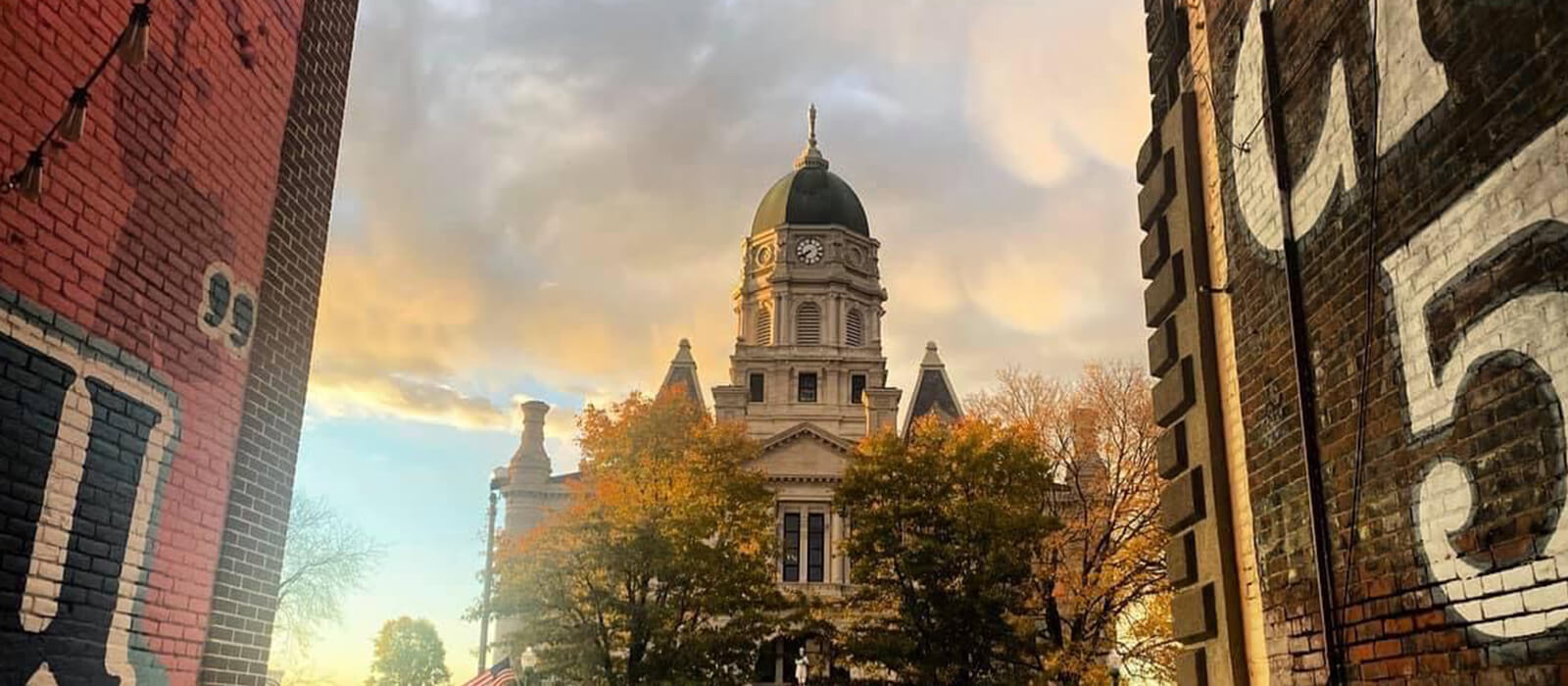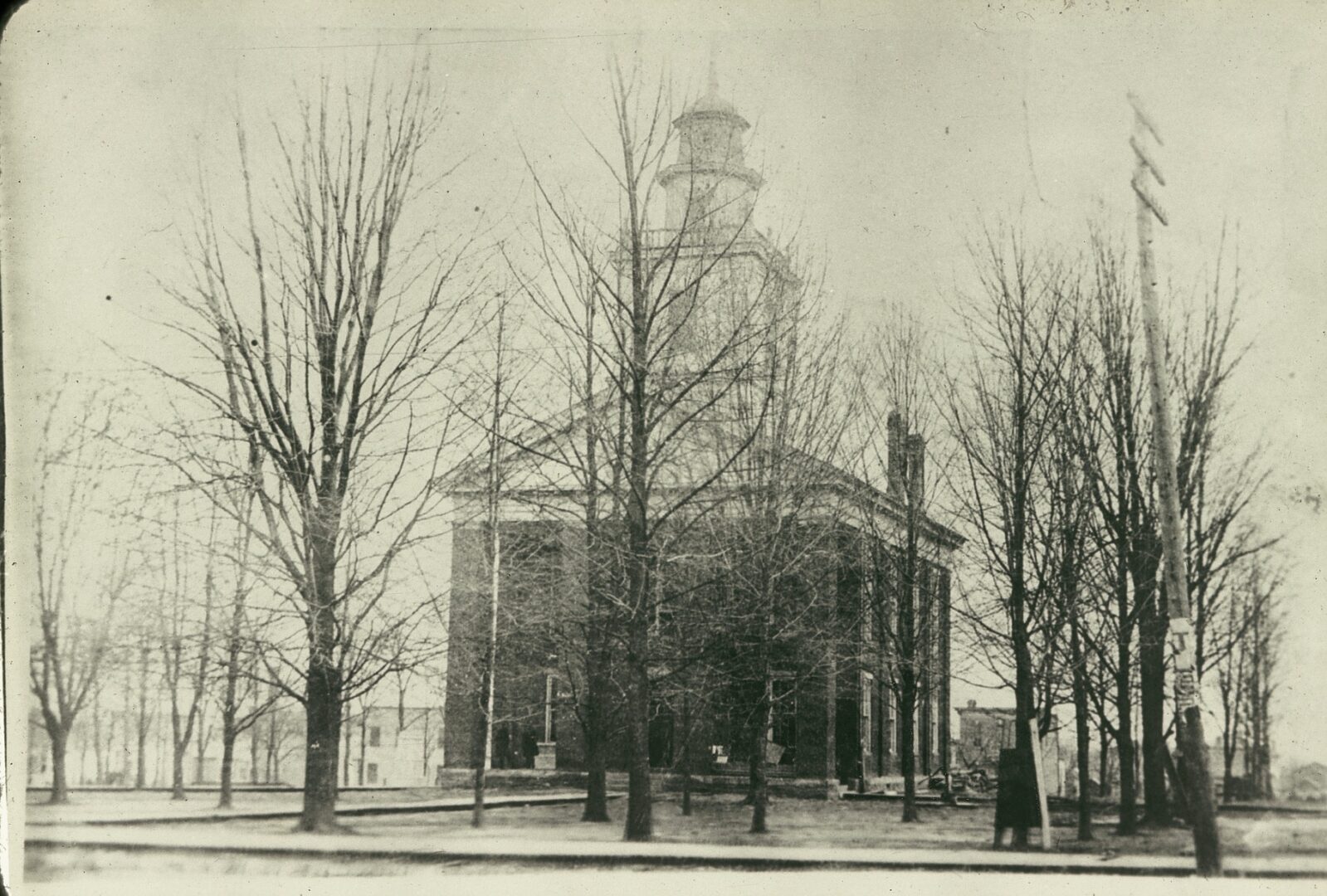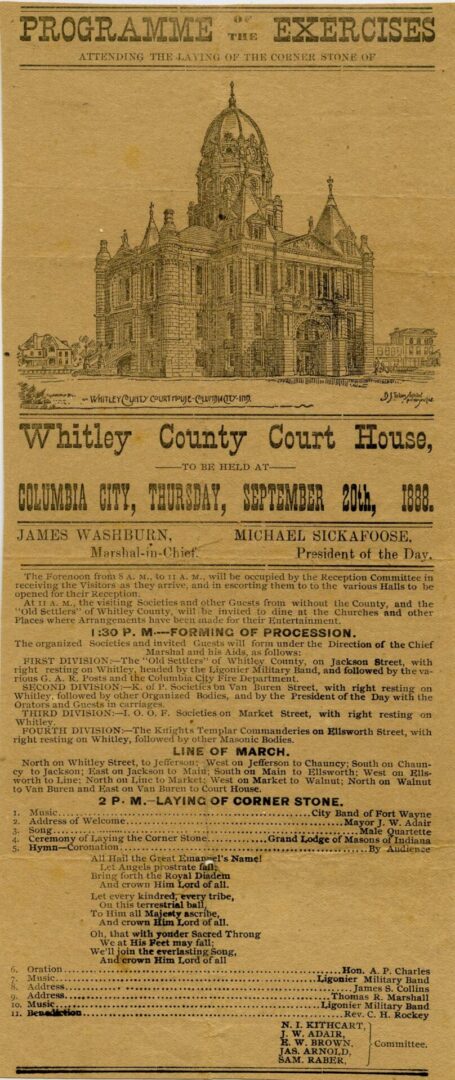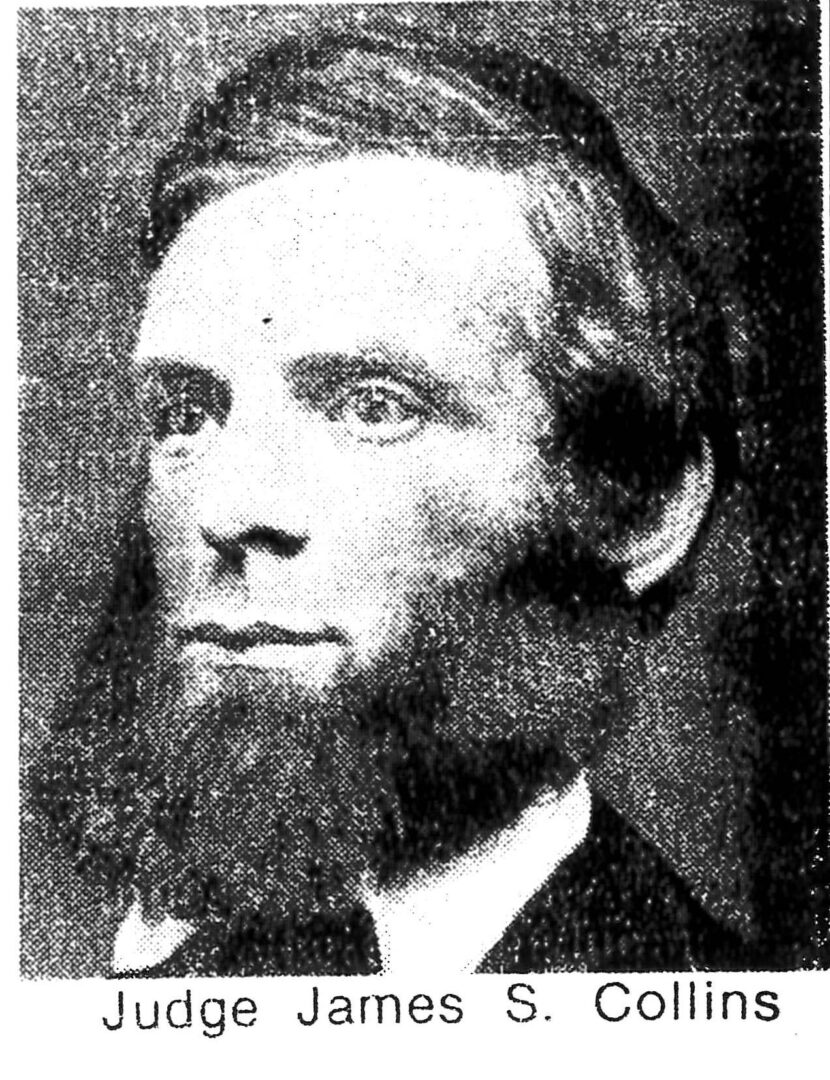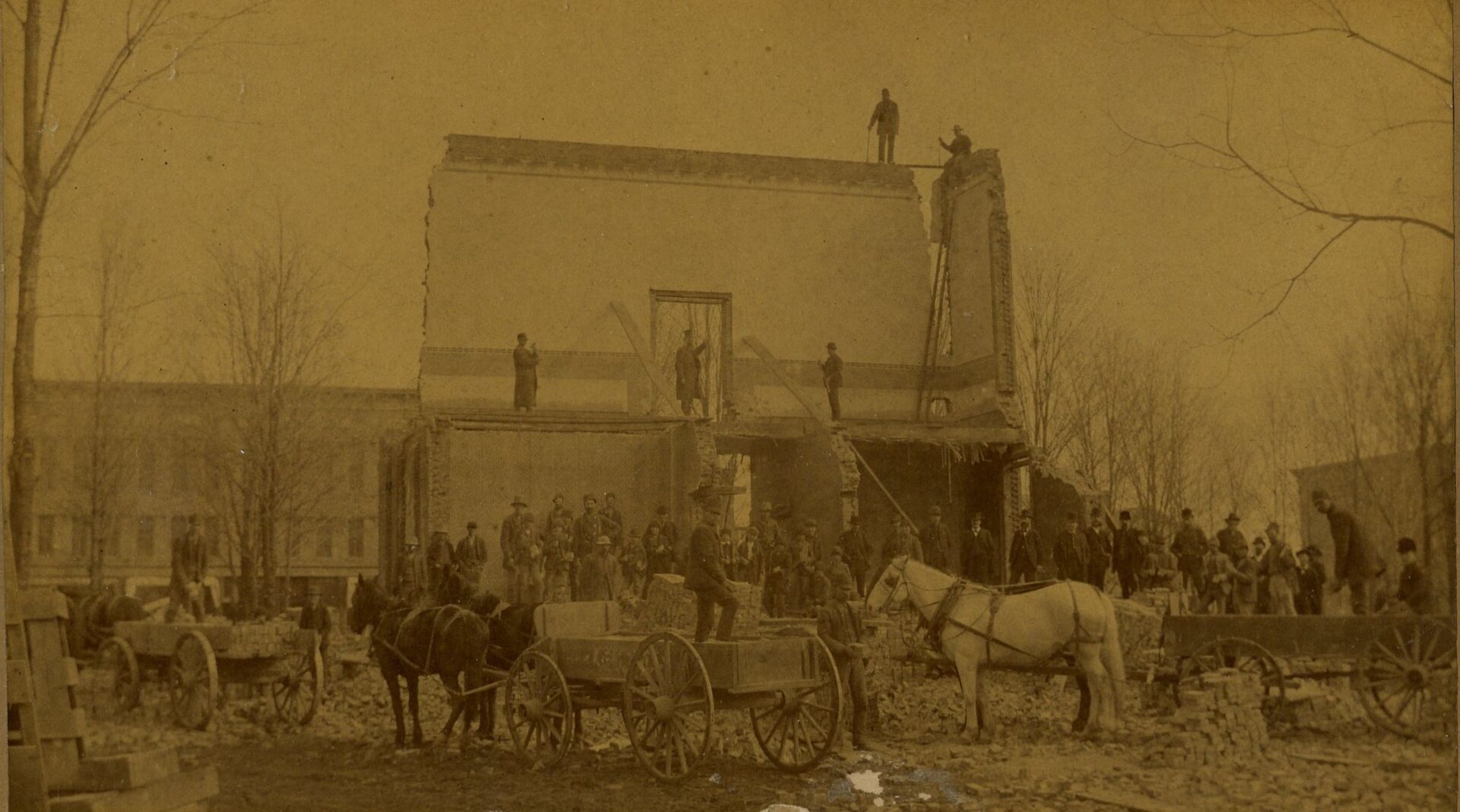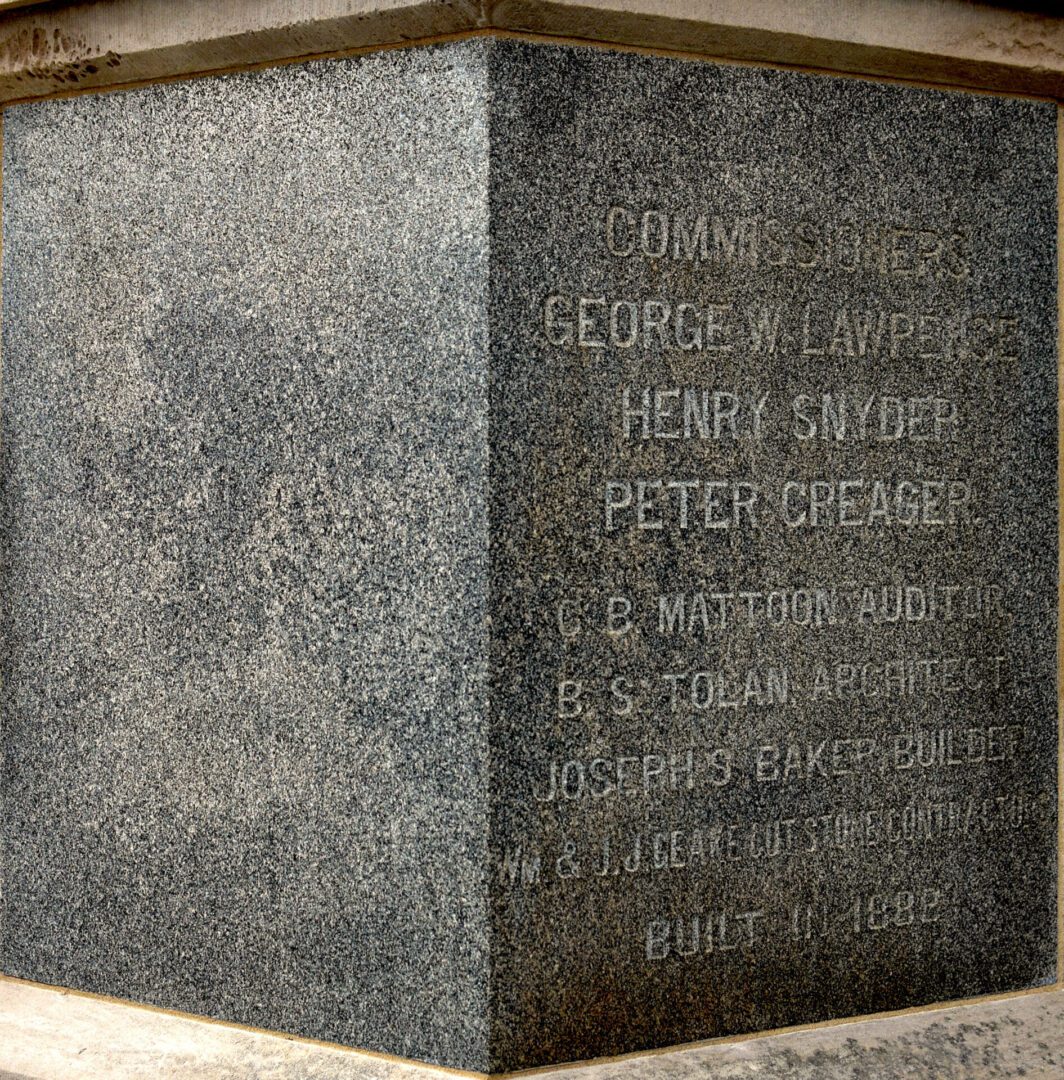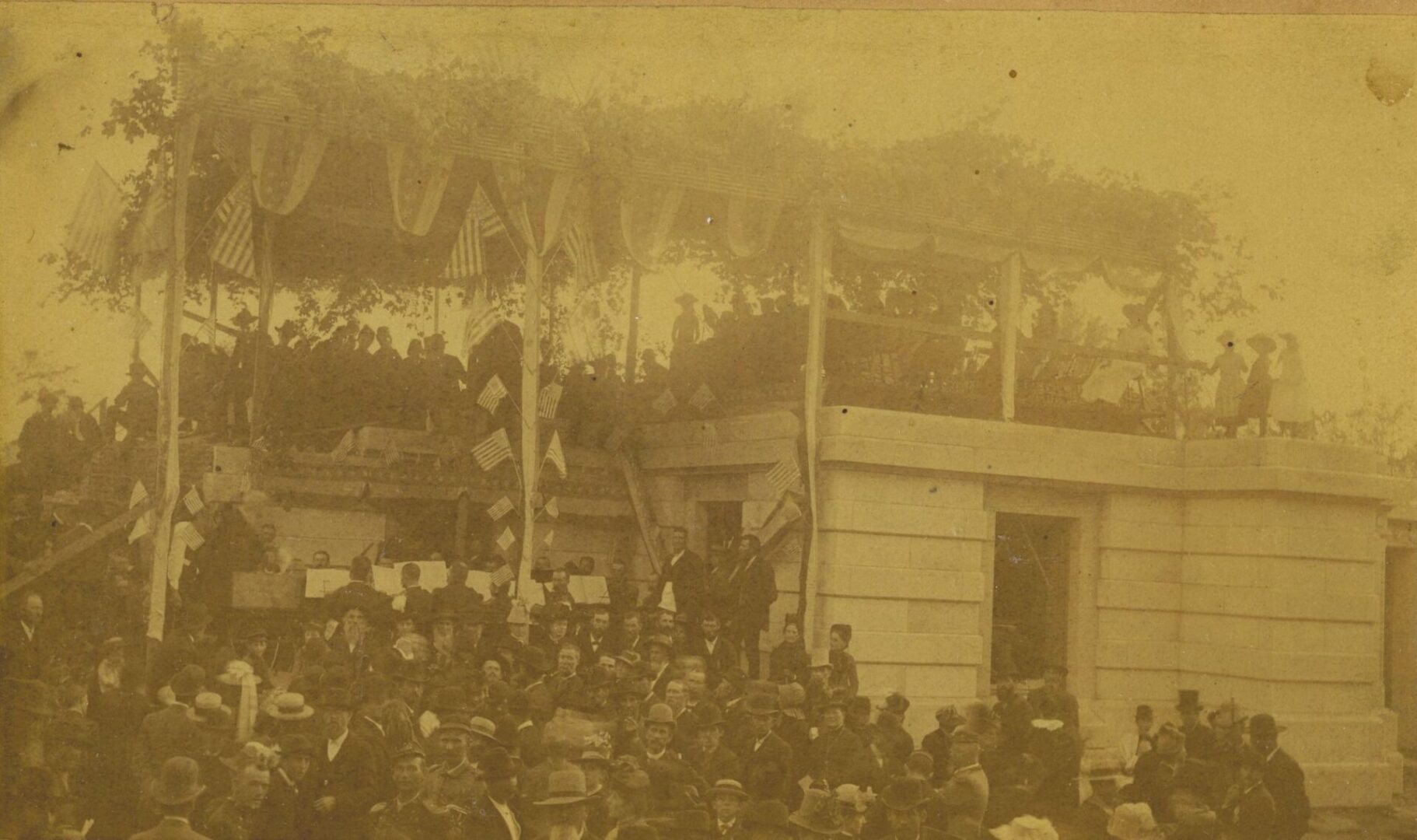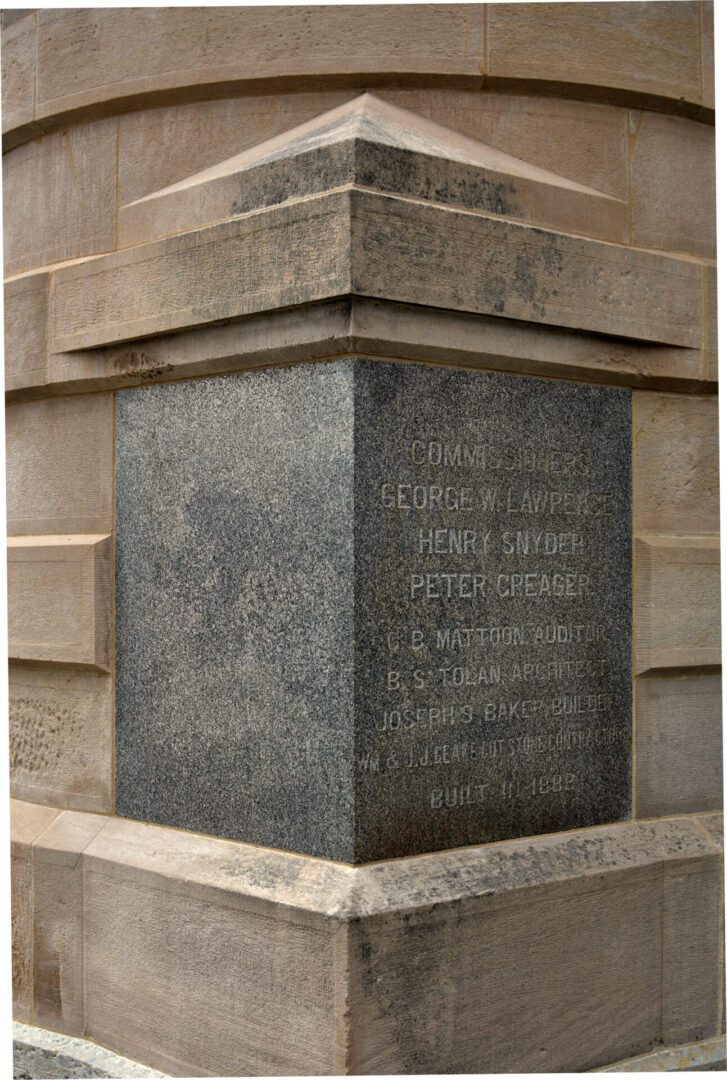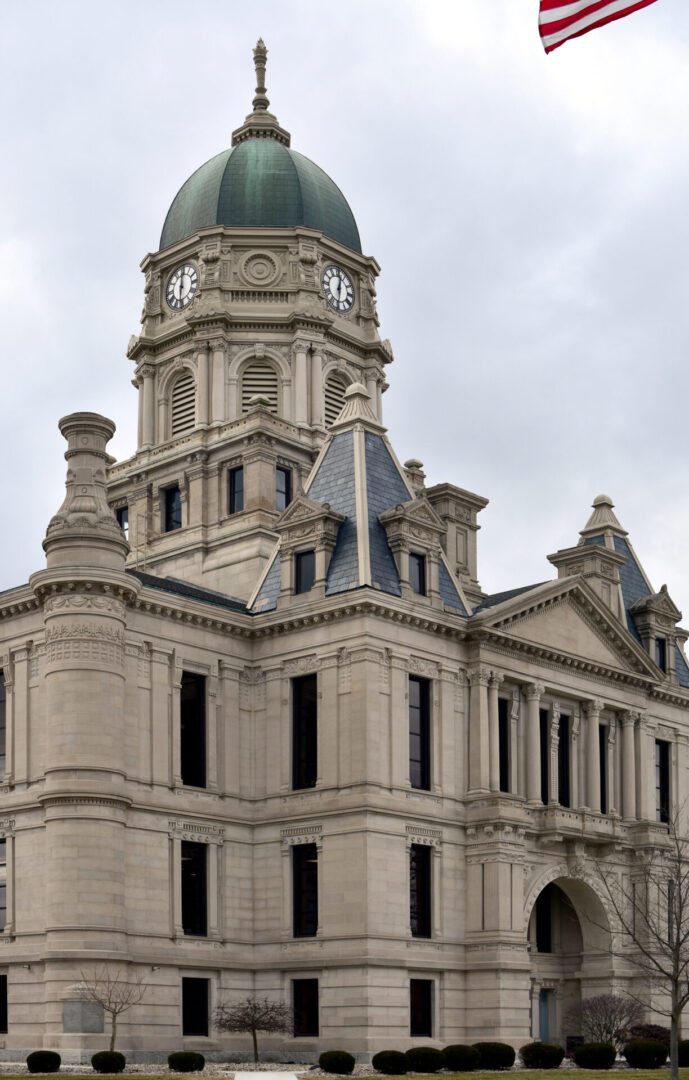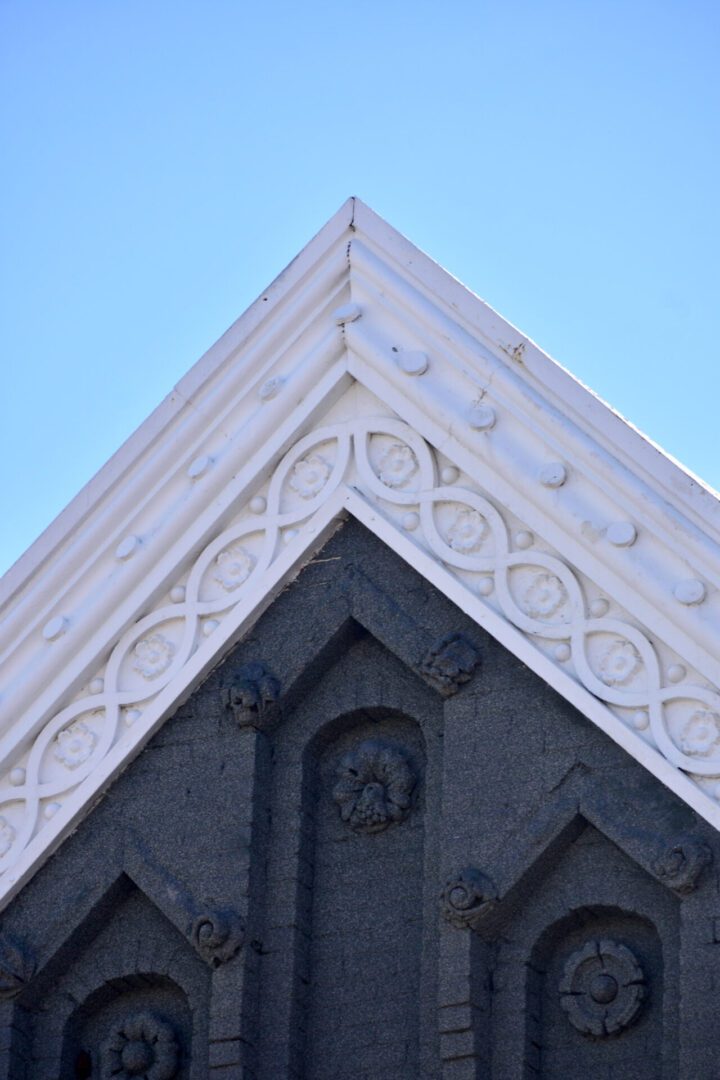“Forward all along the line till Eden be ours again.” A new courthouse, the third in Whitley County, was needed.
The second courthouse that had been built in Whitley County had become a beloved spot for the community. Not only was official business conducted inside, but it was also home to church services, political conventions, lectures and community meetings. But defective chimneys, leaking in the roof and a lack of fire safety measures threatened the protection of county records. Taking this into account, along with a growing population, it was decided that a new courthouse must be constructed.
The Board of Commissioners met Feb. 1, 1888 to receive bids for the construction. It was awarded to Joseph S. Baker, of Warsaw, who also took on the razing of the brick courthouse.
The cornerstone dedication took place Sept. 20, 1888. The cornerstone was a block of granite two feet and 9.5 inches square and three feet and three inches in height, and it was placed on the northeast corner. By September, the courthouse had been built up to the top of the cornerstone block. The stage for the ceremony was the second floor of the courthouse.
The day began with a parade through the town and free entertainment provided by the various local lodges and organizations. The ceremony was conducted by the Masonic Order. Noted speakers for the day were Past Grand Master H.G. Thayer, of Plymouth, judge and local attorney James S. Collins, and a young Thomas Marshall, who was an attorney in town before becoming governor of Indiana and later vice president.
Marshall concluded the speeches for the day. He spoke poetically, making many references to faith, education and the importance of law and progress. As reported in the local newspapers, Marshall told the attendees, “The community must look forward. No steps backward. Day by day we learn a little more as we realize that religion and education are the handmaidens of progress.”
He concluded his speech by saying, “Forward all along the line till Eden be ours again.”
Inside the cornerstone was placed a time capsule. Enclosed were some 100 items including a Bible; invitations, posters and programs from the cornerstone dedication; instruments used by the courthouse architect B.S. Tolan in making his drawings; cards and addresses of businesses in all corners of the county; by-laws and a list of officers of various organizations including Columbia City Lodge No. 176 I.O.O.F., Odd Fellows, Royal Arch Masons and Scottish Rite; constitution and minutes of the first Sunday School in Columbia City, which took place April 15, 1846; register of the Grace Lutheran Church with a list of members; newspaper copies of the Fort Wayne Daily Gazette (Sept. 20), Fort Wayne Daily Journal (Sept. 20), The Voice prohibition paper (Sept. 13), Columbia City Post (Sept. 19), Columbia City Commercial (Sept. 20), Whitley County News of South Whitley (Sept. 14) and the Sunday People and Dispatch of Churubusco (Sept. 16); the official directory of Columbia City and the township officers; listings of Union soldiers both living and deceased at the time; photographs; and more.
One of the most unique inclusions was a silver dollar by then-county auditor C.B. Matton. Wrapped around it was a note from him which read, “To the unborn: I enclose in this sheet of paper the American dollar dated in the year of our Lord, 1799, which is decorated with 13 stars representing the 13 original states. It has passed through wars and rumors of wars, and has been used by many toothless children; may its future be free from inundation and conflagrations, and may the Lord bless the finder.”
At the top of the capsule was placed the square, level and plum used by Tolan before it was closed. Once placed in its proper position it was leveled, tested and approved. Corn, wine and oil were poured over the top and those in attendance sang the coronation hymn. This cornerstone, and the items inside, remain to this day.
Thank you to the Whitley County Historical Museum for sharing photos from their collection and for their outstanding research and writing of the article.
Where are We: Architectural History
The location of this stone block is perhaps obvious, but probably few have taken the time to read the text or to appreciate its significance. This stone block is the cornerstone of the current Whitley County Courthouse. It is engraved on one side with the names of County officials, architect, and contractors, and the year construction started.
Ornamental cornerstones have been part of masonry buildings for centuries, with the cornerstone being symbolically the first part of a structure to rise above the foundation. The laying of the cornerstone was a celebrated event during a public building’s construction. In the 19th-century, cornerstones were frequently hollow, and the cornerstone laying ceremony included filling the cavity with newspapers from the ceremony date, bibles, photos, coins, and similar mementos. The Courthouse’s cornerstone is like this, awaiting opening at some future date.
Architecturally, it is intriguing that this cornerstone was placed in one of the courthouse’s round turrets instead of one of its square corners. This means that the otherwise circular northeast turret has a square cornerstone topped with a unique capstone that blends the square and round forms together.
Thank you to Nathan Bilger for providing the recent photos and valuable insights into the architectural history.
The Whitley County Courthouse is just one stop on our Downtown Historic Tour. Download the app and take the tour! www.distrx.com For more information on the Whitley County Courthouse, reach out to the Whitley County Historical Museum at https://whitleymuseum.com/
